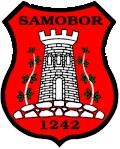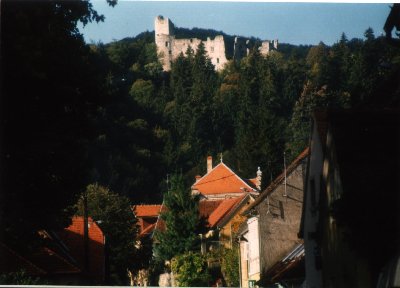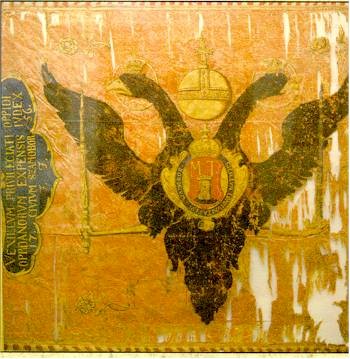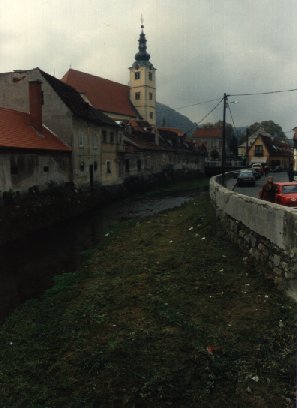

- Samobor region was inhabited from the ancient times.
The oldest artifacts found originate from The Stone Age - stone ax, hammer
and knife. Much richer are the remnants from Bronze Age, Iron Age and from
the age of Roman reign. These parts were populated by Illyrian tribe
of Iapodes. There are numerous archeological sites in Žumberak hills, near
the villages of Budinjak, Bratelji and Gornja Vas.
The oldest written evidence of Samobor is The Charter of Bela IV, Croatian-Hungarian king. With this document, after the war with the Tartars, the king acknowledged the privileges given to Samoborians by Archduke Koloman two years earlier. The place of Samobor was thus elevated to the status of "free royal chartered marketplace", with the right of advowson (choosing the priest), electing the judge and administration of justice including the "right of sword" (ius gladii), e.g. the capital punishment. Samobor had no other lords except its own citizens, and paid taxes only to the king.
 Around
years 1261-1271 The Samobor Castle was build on the hill above the town.
It was built by supporters of Bohemian king Otokar Přemisl II in the war
over Babenberg heritage. In the year 1274 the castle was taken over by
duke Ivan Okićki. The owners of the castle changed often, but they all
respected the privileges given by Bela IV, until by mistake in the year
1488 Barbara Frankopan was introduced as the owner of not only the castle
but the place itself. The struggle for justice and old privileges lasted
for three hundred years and was finally ended by the end of 18 century.
Until that time the castle deteriorated to such extent that the owners
deserted it. Finally Samobor bought the ruins in 1902.
Around
years 1261-1271 The Samobor Castle was build on the hill above the town.
It was built by supporters of Bohemian king Otokar Přemisl II in the war
over Babenberg heritage. In the year 1274 the castle was taken over by
duke Ivan Okićki. The owners of the castle changed often, but they all
respected the privileges given by Bela IV, until by mistake in the year
1488 Barbara Frankopan was introduced as the owner of not only the castle
but the place itself. The struggle for justice and old privileges lasted
for three hundred years and was finally ended by the end of 18 century.
Until that time the castle deteriorated to such extent that the owners
deserted it. Finally Samobor bought the ruins in 1902.

In the years 1809 - 1813 Samobor was under the French
rule as the center of a canton in The Illyrian provinces of Napoleon empire.
The French founded the post office in the town and built a road towards
Zagreb.
Samobor was one of the more important centers of The
Croatian National Renaissance in the first half of 19 century. here lived
the composer Ferdo Livadić who in his mansion (The Samobor Museum today)
in 1833 set music to lyrics of Ljudevit Gaj for the most famous patriotic
song of the period "Croatia has not perished yet". Many peers of the movement
were often his guests. So Stanko Vraz, the first Croatian professional
journalist and writer, met his Ljubica here, Julijana Cantilly, to whom
he dedicated his book of poetry "Đulabije" (Red Apples).
In Samobor The Communist Party Of Croatia was founded
in 1937 and Samobor and Žumberak hills were an important center of the
partisan antifascist movement during World War II.
- In 1797 the town was destroyed by great fire. After the
fire the core of today’s Samobor was built.
- Parochial church of St. Anastasia from 1671

Franciscan monastery and church of BV Mary’s Assumption from 1733, with ancient library, a few incunabula
St. Michael’s Chapel and St. George’s Chapel from 16 century
St. Philip and Jacob’s Chapel from 17 century
St. Anne’s Chapel from 18 century
- Podolje Mansion from 16 century
Livadić Mansion from 18 century
- School in Samobor was first mentioned in 1535
Town brass band founded in 1807, second oldest in Croatia
First library and reading room was founded in 1843, People’s Library And Reading Room in 1900, active still